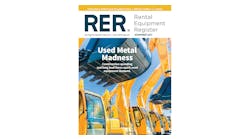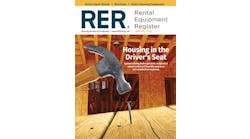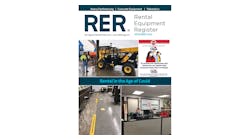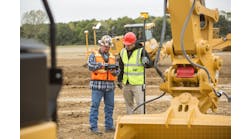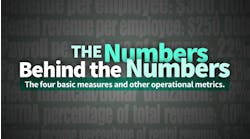Scissorlifts, boomlifts and vertical masts — for some rental companies this aerial equipment comprises part of their business; for others, it is their business. But no matter how many a company has in its rental fleet or how often they are on rent, it's important for rental company personnel to know what the customer is going to do with the equipment before the rental so they can help select the right machine to suit the customers' needs. A rental company also needs to be aware of its responsibilities with regards to operator training, product familiarization upon delivery and other things.
First let's take a look at making sure the customer gets the right machine for the job. The right machine can increase productivity, reduce accidents and avoid problems for both the rental company and the customer. Getting the wrong machine, however, can result in misuse of the equipment, which can cause an accident when the customer tries to do something with the machine that it wasn't designed to do.
Oftentimes customers call and ask for a certain size and type of machine. But what they request may not be the best option for their particular needs unless they have done a complete jobsite analysis. Sometimes the rental company has to help the customer determine the best machine for the application. Aerial work platforms are available in a wide variety of styles and sizes for use in outdoor or indoor applications, and on surfaces ranging from solid concrete floors to soft soil and mud. The rental operator can only recommend the best machine for a customer's application if they know how the customer plans to use it.
To determine the right machine for a customer, there's a lot more a rental company needs to know besides how high they need to reach. A 60-foot boomlift may be able to reach the upper parts of a five-story building if it is positioned near or directly under the overhead area to be accessed. But what if there are ground-level obstructions that necessitate the boom being positioned 20 feet away from the building? In that case an 80-foot machine may be required. If the rental company delivers a 60-foot boom based only on the height the customer needed to reach, they would be replacing it before the customer ever got a chance to use it.
Sometimes there are also overhead obstructions or obstacles that may require using an articulated boomlift or a boomlift with an articulated jib to reach the work area. Determining the proper size and type of machine required for a job almost always involves a review of both vertical reach (height) and horizontal outreach.
Reach alone is not the only thing you need to know however. Equally important is where it will be operated — indoors or outdoors, on a concrete floor or on dirt, on a level surface or a slope, in congested areas or out in the open. All of these factors can influence the selection of the best aerial work platform for the job.
If the application is outdoors, a machine with any power source including gas, diesel, or dual-fuel engines will usually work. Where noise is a concern however, electric-powered boomlifts with up to 60-foot working heights are available. For work indoors, electric-powered or dual-fuel machines are the norm since they don't produce hazardous emissions.
Another consideration is the surface that the aerial platform will be traveling on and working from. In many indoor applications the floor is concrete or some other firm, level surface. For these applications an electric slab-type scissorlift or electric boomlift can be used. Usually these types of machines also feature non-marking tires so they can even be used on delicate flooring.
When an aerial work platform is used on dirt or other uneven surfaces, a rough-terrain scissorlift with leveling jacks or a boomlift is normally required. If the surface is soft or muddy the customer might require a 4-wheel-drive machine or even one with a crawler undercarriage. If the terrain is sloped, they may need a machine with more gradability to move around the jobsite, and if there's a lot of debris on the ground, they may need one with additional ground clearance. A variety of tire options are also available including pneumatic, foam-filled or high-floatation “turf tires” for different applications.
Rental companies also need to consider the location where the machine will be operated and how to get it to that site. Does it have to be moved through a doorway or into an elevator where overall size and weight are critical? Are there tight aisles or congested areas that require a tight turning radius or where less tailswing is important? Are there any floor load requirements where a lighter machine might be necessary? Are there overhead obstructions?
Once the size and type of machine needed is determined, it's important to find out what work will be performed from the platform. How many people and how much material will be needed in the platform may dictate the platform size and capacity. The rental company should also ask what types of tools are required to do the job? Along with standard electrical outlets on the platform, today's leading manufacturers offer a variety of optional tools for use on the platform. Built-in generators in the base with electrical, air and water lines running through the boom to the platform are available to power platform-mounted welders, plasma cutters, saws, pressure washers, lighting systems and more. Not only do these systems increase productivity, they also provide a safer working environment since they eliminate wires or hoses running over the side of the platform to the ground.
Once the right machine for the job has been determined and the customer delivery has been scheduled, the rental company has responsibilities with regards to operator training and product familiarization upon delivery. According to the recently revised American National Standards Institute standards, the rental company must offer appropriate training to “facilitate owners, users and operators to comply with requirements set forth in the standard.” Note that the rental company doesn't have to actually “provide” the training but must “offer” a reasonable accommodation for training. If you don't have a training program set up at your location, many manufacturers and other organizations conduct training classes on a regular basis and you can refer your customers to one of those programs. Under the new standards, it is the user's responsibility to make sure that their operators are trained before using the equipment.
Another change in the recently released ANSI standards that affects rental companies is the requirement that rental companies conduct familiarization upon delivery to the “person designated by the receiving entity.” Familiarization is defined by ANSI as “providing information regarding the control functions and safety devices for the aerial platform(s) to a qualified person or operator.” The rental company must also retain records of the persons giving and receiving familiarization for at least four years.
According to the new standards it is also a requirement that “aerial platforms shall be inspected, serviced and adjusted to the manufacturer's requirements prior to each delivery by sale, lease or rental.” These records, along with any records of frequent and annual inspections, or records of repairs performed, must also be retained for at least four years. This requirement, along with the above training and familiarization standards are incorporated into the “Manual of Responsibilities” which must be provided with each machine and stored in the weather-resistant storage compartment located on the machine.
In addition to the new ANSI standards it is also important to remember that whenever a rental company directs its personnel to operate an aerial work platform while loading, unloading, inspecting, making a sales demonstration, moving the aerial device around the rental yard, or any other form of use, the rental company assumes the responsibilities of a user. This means that the rental company must make sure that the person operating the aerial work platform has received sufficient training to become a qualified person regarding the task to be performed and has received familiarization on the specific aerial platform being operated.
Aerial work platforms are great tools for rental customers and a great source of revenue for the companies that rent them. As long as aerial work platforms are used properly, they can increase productivity and make the workplace safer. Many of the benefits of using an aerial work platform are lost, however, if the wrong machine is delivered to the jobsite and the people involved are using it improperly. When you talk with your customers, find out what they really need. Take the time to understand how they are using the machine. And, when you deliver it, make sure that it is operating properly. It's your responsibility.
William Hindman is president of Elk Grove Village, Ill.-based Industrial Marketing Services.
